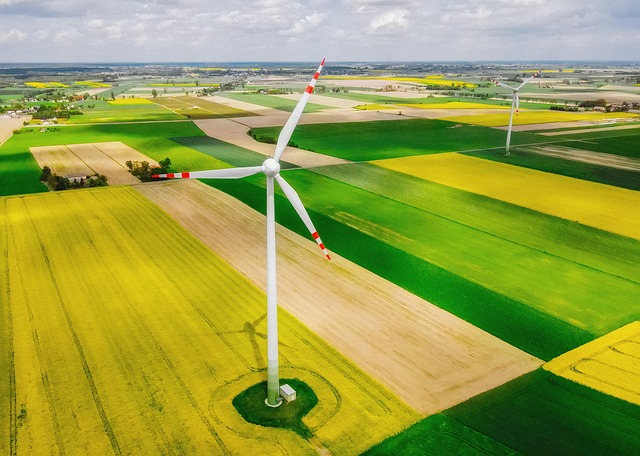
The Intersection of Clean Energy and Climate Action: A Call to Arms
The ongoing battle against climate change has reached a critical juncture, demanding an urgent and comprehensive response that integrates clean energy solutions. As global temperatures continue to rise, extreme weather events become more frequent, and ecosystems face unprecedented challenges, the need for a swift transition to clean energy sources has never been more pressing. This article explores the intersection of clean energy and climate action, emphasizing their mutual reinforcement, the multifaceted benefits of clean energy deployment, and the imperative for concerted action at all societal levels.
Understanding the Climate Crisis
At its core, climate change represents a fundamental disruption of the Earth’s climate system, primarily driven by human activities—especially the burning of fossil fuels. As greenhouse gas emissions accumulate in the atmosphere, they trap heat from the sun, leading to global warming. The consequences of this warming manifest in rising sea levels, altered precipitation patterns, intensified natural disasters, and diminishing biodiversity.
The impact of climate change is not uniform; it disproportionately affects vulnerable populations and regions, exacerbating social inequalities and posing threats to food security, health, and economic stability. In light of these realities, the urgency for immediate climate action cannot be overstated.
The Role of Clean Energy
Transitioning to clean energy is a pivotal strategy in combating climate change. Clean energy sources, which include solar, wind, hydroelectric, and geothermal power, produce little to no greenhouse gas emissions over their operational lifetimes. Their adoption provides a pathway to significantly reduce reliance on fossil fuels, thereby curtailing emissions that drive climate change.
In addition to mitigating climate change, clean energy offers numerous benefits:
- Economic Growth: The clean energy sector is one of the fastest-growing industries, creating jobs in manufacturing, installation, and maintenance of renewable energy systems.
- Energy Security: Diversifying energy sources enhances energy security, reducing dependence on imported fossil fuels and insulating economies from price fluctuations.
- Public Health: Transitioning to clean energy reduces air pollution from fossil fuel combustion, leading to improved air quality and better public health outcomes.
- Sustainable Development: Access to clean, affordable energy fosters equitable development, particularly in underserved communities that often face energy poverty.
A Global Call to Arms
While the benefits of clean energy are clear, their realization requires a collective and concerted effort from governments, businesses, and individuals. The current global landscape presents both challenges and opportunities for advancing clean energy solutions.
International agreements, such as the Paris Agreement, highlight the recognition of climate change as a global issue requiring cooperative solutions. Countries have committed to reducing emissions and limiting temperature rises, and many are turning to clean energy as a critical strategy to meet their targets. However, current policies and actions must accelerate considerably to keep global warming below the crucial threshold of 1.5 degrees Celsius.
Policy Initiatives and Investments
Governments must implement policy frameworks that prioritize clean energy development and deployment. These include:
- Establishing clear renewable energy targets and supporting ambitious climate plans.
- Providing incentives for investing in renewable technologies, such as tax credits, grants, or subsidies.
- Supporting research and development to drive innovation in clean energy technologies.
- Implementing carbon pricing mechanisms that reflect the true environmental costs of fossil fuels.
- Facilitating energy efficiency programs that reduce overall energy consumption.
Additionally, mobilizing capital investments into clean energy infrastructure is essential. Public and private sectors need to collaborate to create funding mechanisms that bring clean energy projects to fruition. Innovative financing options, such as green bonds and climate resilience funds, can underpin the transition toward a sustainable energy future.
Community Engagement and Local Action
While government action is critical, grassroots movements and local initiatives are equally important for fostering a culture of sustainability. Communities can leverage local resources and expertise to implement clean energy projects, such as community solar installations or wind farms. Engaging citizens in the design and execution of these projects encourages a sense of ownership and spur local job creation.
Education plays a key role in this process. By raising awareness of climate issues and the benefits of clean energy, communities can cultivate a sense of stewardship toward the environment, driving demand for sustainable solutions. Collaboration with educational institutions can enhance research, innovation, and curriculum development that prioritizes sustainability and clean energy.
Fostering a Circular Economy
The transition to clean energy must go hand in hand with a broader shift toward a circular economy. This model emphasizes resource efficiency and waste reduction, promoting sustainability at every stage of production and consumption. Implementing practices such as recycling, repurposing, and sustainable sourcing not only contributes to lower emissions but also fosters resilience in the face of resource scarcity.
As consumers increasingly demand eco-friendly products and services, businesses can find a competitive advantage by adopting circular practices. By integrating clean energy solutions into their operations and supply chains, companies can mitigate their carbon footprint while enhancing their brand reputation.
Global Cooperation and Technological Innovation
A successful transition to clean energy requires global cooperation and technological innovation. The transfer of renewable energy technologies and expertise between countries can accelerate the deployment of clean energy solutions, particularly in developing nations. Initiatives that facilitate knowledge sharing, research collaborations, and joint ventures can empower nations to leapfrog traditional fossil fuel reliance and embrace sustainable energy pathways.
Moreover, technological advancements such as smart grids, energy storage systems, and carbon capture and storage technologies will play a critical role in optimizing energy distribution and enhancing grid reliability. Investment in research and innovation must be prioritized to drive these advancements forward, ensuring that the transition to clean energy is both efficient and effective.
Conclusion: A Collective Responsibility
As we stand at this critical intersection of clean energy and climate action, the message is clear: we must act now. The stakes could not be higher; our collective future depends on finding sustainable ways to power our economies, protect our ecosystems, and foster resilience in communities worldwide. A commitment to clean energy is not merely an option; it is a necessity that transcends borders, policies, and industries.
For individuals, businesses, and governments alike, embracing clean energy solutions represents an opportunity not only to address climate change but to build a sustainable future for generations to come. Let us answer this call to arms, fueled by unity, innovation, and an unwavering dedication to protecting our planet.



